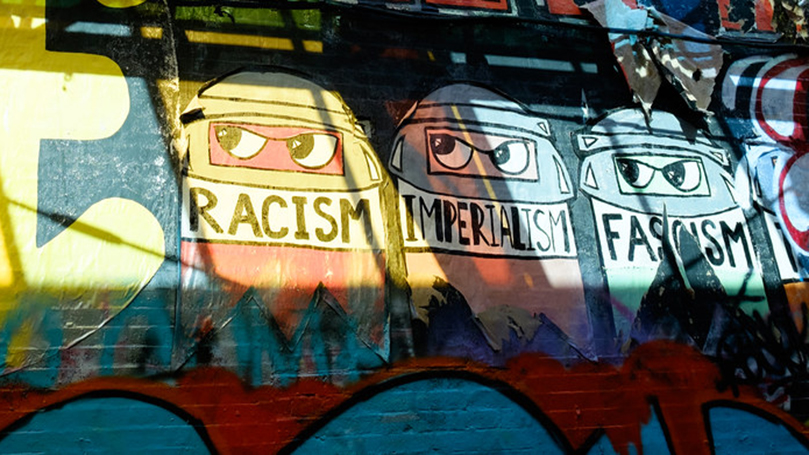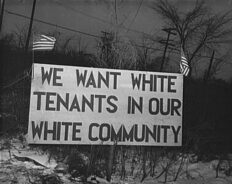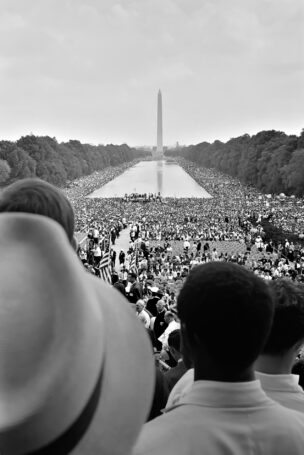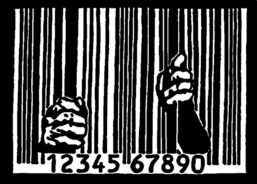
The Trump administration’s fascistic response to the 2020 #BlackLivesMatter uprising, the U.S. government’s deadly, incompetent response to COVID, and the sudden withdrawal from Afghanistan reflect a long-term structural crisis in U.S. imperialism and democratic legitimacy. Over the past two decades, that crisis has been marked by general economic decline, the failures of endless war, human rights scandals, the Great Recession of 2007, worsening domestic terrorism and a culture of violence, ongoing democratic failures, and relentless systemic racism and social oppressions.
Washington is on its heels. In the present moment, racist authoritarian, liberal/neoliberal, and social democratic and socialist forces contend for control of U.S. state-ideological institutions. Recent events have exposed crisis as the norm, threatening to demystify the limits of the political system. What remains in doubt, however, is what will replace it.
The crisis of neoliberalism has placed the growing influence of fascism at the center of global politics, while trying to marginalize social democratic and socialist alternatives. Anti-racist struggles and the COVID-19 pandemic threaten capitalist rates of profit, the lives of the labor force, the supply chain, productive capacity, and the cultural and technical development of the working class. Deep economic crisis seems to be just at the horizon. These contradictions — combined with the global and domestic collapse of the U.S. political system’s legitimacy— have seen the migration of neoliberalist ideologues and capitalists into the fascist movement as a strategy to save, at all costs, their power, wealth, and leverage in global capitalism. The Trump-led section of the U.S. ruling class has resurrected white nationalist rhetoric to cover the weaknesses in the U.S.-led global order, which seemed to become an exposed wound in the recession’s aftermath.
Neoliberalism’s rise about 50 years ago followed significant economic crises, changing strategic positions of the U.S. ruling class, and fluctuations in the deployment of state power. Following the Great Depression, global war, and the decolonization process, the U.S. ruling class needed to elicit support for an anti-communist and neo-imperialist agenda. The communist-led working-class insurgency of the 1930s produced a deep political opening through which democratic and left forces sought to destabilize capitalist rule in favor of working-class power. The balance of class forces in the postwar period, however, normalized a social democratic consensus among corporations, labor, and the state that eliminated the communist threat through political repression and a concerted mass cultural marginalization of a radical counter-hegemony.
 This social-democratic New Deal coalition fell into crisis in the 1960s due to several factors. On the local level, white people fled urban concentrations of industry and political power for racially segregated suburban dreams of homeownership. This population shift was fueled by a joint operation of a “whitelash” against racial equality and, as scholar Keeanga-Yamahtta Taylor has shown, capitalist policy of aligning property values with “race” (through lending policies and racial redlining). A second reason for social democracy’s crisis lay in Cold War imperatives for militarization and war determined by monopoly capitalism’s exploitative necessities. In 1974, even as the crisis emerged, Communist Party Chair Henry Winston labeled the ruling-class strategic policy the “Moynihan-Kissinger doctrine,” which linked domestic policies of managing dissent, especially among racialized communities, stabilizing capitalism, and the overseeing of imperialist interests. (Moynihan was a liberal politician in the 1960s who gave an academic veneer to racist policies that enabled the construction of the prison industrial complex. Kissinger, a Republican diplomat, is most closely associated with Cold War militarism and human rights atrocities.)
This social-democratic New Deal coalition fell into crisis in the 1960s due to several factors. On the local level, white people fled urban concentrations of industry and political power for racially segregated suburban dreams of homeownership. This population shift was fueled by a joint operation of a “whitelash” against racial equality and, as scholar Keeanga-Yamahtta Taylor has shown, capitalist policy of aligning property values with “race” (through lending policies and racial redlining). A second reason for social democracy’s crisis lay in Cold War imperatives for militarization and war determined by monopoly capitalism’s exploitative necessities. In 1974, even as the crisis emerged, Communist Party Chair Henry Winston labeled the ruling-class strategic policy the “Moynihan-Kissinger doctrine,” which linked domestic policies of managing dissent, especially among racialized communities, stabilizing capitalism, and the overseeing of imperialist interests. (Moynihan was a liberal politician in the 1960s who gave an academic veneer to racist policies that enabled the construction of the prison industrial complex. Kissinger, a Republican diplomat, is most closely associated with Cold War militarism and human rights atrocities.)
A convergence of the “warfare-welfare state” in the late 1960s saw the contradictory mixture of war escalation, the extension of welfare policies, and a domestic militarized police repression to quell urban insurrections. Enduring class conflict over the Vietnam war, civil rights, and expansion of New Deal policies revealed to the U.S. ruling class that, as the Marxist geographer David Harvey has put it, “traditional social democratic and corporatist solutions” had “proven inconsistent with the requirements of capital accumulation.” Further, the U.S. ruling class, embroiled in its reactionary alliance with white-supremacist South Africa and stinging from the codification of anti-colonialism in international institutions in the 1960s, gave vent to fear and panic, as Gerald Horne has shown, when an alliance of liberation movements and socialist countries thwarted fascist-imperialist rule in Angola in 1974, leading to the collapse of white rule throughout southern Africa. For imperialists, this global crisis necessitated a new strategy that bolstered right-wing forces around Ronald Reagan and a racialized neoliberal model of social hegemony.
Simultaneously, domestic conditions deepened the capitalists’ racial and class anxiety. Waves of Black-led insurrections in hundreds of cities from 1964 to 1972 — resulting in disruptions in social discipline regimes, lost property values, migrations of working populations, geographical shifts in political and economic resources, and wasteful accumulations of resources in policing and prisons — led to the precipitous decline in labor productivity. The general decline in labor productivity, combined with the “profit squeeze” imposed by social democratic policies and labor union contracts, produced a decline in the rate of profit. Corporations responded with higher prices, pushing inflation during a period of general crisis. The failures of capitalism in the 1970s and 1980s were evident but managed by a manipulative Cold War dogma. A declining rate of profit fueled corporate demands for wage cuts and higher prices on goods, which, when compounded by crises in international finance, oil, and trade, fueled global unemployment and a dramatic destabilization of the relative position of the U.S. in the global economy. Even as corporations pursued new levels of super-exploitable labor globally, in the U.S., an unstable financial system, runaway inflation, and shuttered factories and enterprises on a wide scale accompanied a breakdown of the prevailing social order. Then-chair of the Council of Economic Advisors for the Ford administration, Alan Greenspan, reported that “capitalism is in crisis” to the “point of discontinuity.” Combined with the ascension of the anti-colonial movement, these conditions fueled capitalist resentments against the existing balance of class forces and prompted calls for a new ruling-class political and economic strategy.
 U.S. capitalists faced a critical choice. The potential elimination of racism as a basis of super-exploitation — the central demand of the civil rights movement and the Black insurrections — could produce social peace and social equality. Nevertheless, this approach would require a policy of planned economic development based on limited profit for corporations. This path was not chosen. Instead, U.S. rulers nearly unanimously opted to suppress anti-racist movements, dismantle social democratic policies, and prepare a police-prison complex to manage the resulting social disorder. A causal relation between Black-led insurrections and the declining rate of profit positioned Black working-class people as drivers of economic and political transformation. Black- and people-of-color-authored demands for revolutionary change took the form of concrete steps to reorder social relations of production on democratic lines, but these were met with white hostility from all classes.
U.S. capitalists faced a critical choice. The potential elimination of racism as a basis of super-exploitation — the central demand of the civil rights movement and the Black insurrections — could produce social peace and social equality. Nevertheless, this approach would require a policy of planned economic development based on limited profit for corporations. This path was not chosen. Instead, U.S. rulers nearly unanimously opted to suppress anti-racist movements, dismantle social democratic policies, and prepare a police-prison complex to manage the resulting social disorder. A causal relation between Black-led insurrections and the declining rate of profit positioned Black working-class people as drivers of economic and political transformation. Black- and people-of-color-authored demands for revolutionary change took the form of concrete steps to reorder social relations of production on democratic lines, but these were met with white hostility from all classes.
While a minority of white workers, usually active in the labor movement, sided consistently and sympathetically with the anti-racist struggle, unfortunately, the majority of white workers — fearful of a declining racial status and failing to grasp the democratic impulse for an alternative economic order — aligned themselves in the name of white supremacy with the ruling class. After the civil rights movement, as social relations were adjusted to eliminate white supremacy’s most overt forms, without a revolutionary transformation from capitalism, as Manning Marable argued, “racism itself –– the systematic exploitation of black labor power and the political and cultural hegemony of capital’s interests over black labor –– would remain intact.” As a result, since Reagan, only a minority of white voters have supported even the tepid and wavering Democratic candidates for president. Racist hostilities toward Black, Latinx, and Asian American workers and their communities ensured capitalist class power and the hegemony of its political-economic agenda.
The neoliberal agenda presented itself as an alternative to resurgent global calls for economic planning, controls on monopoly capitalism, the successes of the anti-colonialist national liberation movements, and rigorous regulation of runaway financialization. Neoliberalism served as both a strategic counter to global decolonization and domestic class struggles. The search for lower labor costs in other regions of the planet became an even more widespread response to declining profits than wage cuts and technological displacement of workers. To support this approach to restoring profits, corporations, with the political and military aid of Washington, forced alliances with friendly political classes in countries and regions that could guarantee adherence to global debt regimes, corporate property rights, and the repression of labor.
 Despite the evidence that state-led planned economies in the developing world out-performed economies driven by free-market theory, capitalists demanded a return to market “freedom,” elimination of social democratic policies and institutions, and a deepened working-class exploitation through new regimes of accumulation, stagnant wages, creative forms of dispossession, and the massive expansion of the national security state. New forms of dispossession required a culture of heightened militarization and security, which linked the prison industrial complex directly to an impregnable regime of military spending and global intervention. U.S. capitalists created the largest “gulag,” as scholar Ruth Wilson Gilmore has called the system of mass incarceration, ever known to humanity. Essentially, capitalists created new possibilities for capital accumulation through privatization, freer globalized trade and flows of capital, and the preservation of a globally destabilized reserve army of migrant and super-exploitable labor.
Despite the evidence that state-led planned economies in the developing world out-performed economies driven by free-market theory, capitalists demanded a return to market “freedom,” elimination of social democratic policies and institutions, and a deepened working-class exploitation through new regimes of accumulation, stagnant wages, creative forms of dispossession, and the massive expansion of the national security state. New forms of dispossession required a culture of heightened militarization and security, which linked the prison industrial complex directly to an impregnable regime of military spending and global intervention. U.S. capitalists created the largest “gulag,” as scholar Ruth Wilson Gilmore has called the system of mass incarceration, ever known to humanity. Essentially, capitalists created new possibilities for capital accumulation through privatization, freer globalized trade and flows of capital, and the preservation of a globally destabilized reserve army of migrant and super-exploitable labor.
A racist discourse on “welfare culture” smoothed the ideological ground to build white working-class support for attacks on social democratic, anti-poverty policies that scapegoated poor Black and Brown people. While three-fifths of poor Americans are white, in the popular imagination, poverty signaled a non-white racial identity. Belonging to groups identified politically or culturally as working-class, rather than as middle-class or wealthy, suggested to many whites an affiliation with Blackness. Reagan-led attacks on labor unions by 1983 had reversed almost 40% of the pro-labor decisions ever made by the National Labor Relations Board. By the early 1990s, the unionization rate shrank from nearly 30% to just over 10%. Resources were shifted to fighting in invented and racialized wars on crime and drugs. Pro-working-class regulations on work conditions, occupational health and safety, and especially on finance capital were systematically abandoned. The Gini index, a measure of social inequality, which had sunk to its all-time low in U.S. history to 34.8 in 1968, rose to 45.1 in 2012, reflecting widening income inequality derived from lowered unionization rates, a diminished real dollar-value minimum wage, and other policies that increased the share of national income of the wealthy.
The Great Recession of 2007–9 disrupted delusions of stability. Economists characterized the massive loss of wealth as an overnight “meltdown,” likening it to an infection or a “contamination” that saw the instruments of finance capital spreading disease, collapse, contraction, and loss. The crisis announced the limits of global neoliberal structures, but the proposed remedies reflected an entrenched rejection of innovative and humanist thought. Instead, they relied on neoliberalist, profit-taking norms. A trifecta of domestic political structures blocking progressive taxation or expansions of public debt, IMF-led structural policies, and private credit rating pressures cornered the global economy into what Vijay Prashad calls “finance Keynesianism.” This approach systematized speculative market bubbles by manipulating debt markets to make up for lost profits. Another alternative, “military Keynesianism,” saw the massive expansion of the national security state through building cages, militarizing police forces, starting wars, and repressing political dissent. Over the past 60 years, imperialism has simply moved from crisis to crisis control rather than growth—its main claim to legitimacy—and stability.
Striking is imperialism’s persistent fear of socialist, non-racist alternatives to the dominant system and its values. Socialism “haunts” the U.S. rulers because it poses an existential and realistic threat to their power. Ongoing class struggle and the turn toward white nationalism and authoritarianism make Italian Communist Palmiro Togliatti’s analysis of fascism worth revisiting. Fascism, he argued, is a formation marked by extremist nationalist politics, fueled by racism and xenophobia, and aligned to the extreme-right sections of monopoly capitalist class power. It deploys violent imperialism, weakens or eliminates democratic forms, subverts social institutions, demoralizes the Left and working-class forces, and substantially distorts and deforms bourgeois-democratic civil society. Trump’s domination of the Republican Party and attempt to reshape that party along fascist lines continues to offer to a section of the capitalist class a new avenue for institutionalizing its agenda after the destabilization of capitalist hegemony. The democratic upsurge signaled by the Occupy Movement, the #BlackLivesMatter uprising, and the resurfacing of overtly class struggle politics triggered ruling-class anxieties that made Trumpism (and its successors) seem a necessary antidote to slipping control.
In addition to authoritarianism and violence, fascism co-opts social democratic policies to enhance its populist appeal to capture working-class consensus for capitalist-imperialist rule. While neoliberalism and fascism generally share some characteristics and both accentuate capitalist domination strategies, neoliberalism prefers to normalize capitalist rule through bourgeois-democratic forms, as they are more palatable to liberal-minded sections of capital. Fascist movements and ideas, advancing Togliatti’s logic, gain from the crisis in neoliberalism’s ideological and structural legitimacy, the failure to institutionalize social democratic policies and working-class power, and the re-normalization of racist discourse and white supremacy across U.S. society.
As the post–civil rights era gave way to neoliberalism, then, the class process of exploitation and the super-exploitation of racialized labor continued. Racialized neoliberalism functioned as “counter-revolution” following that anti-racist rebellion and its working-class demands for power, equality, and alterations in systemic configurations of exploitation. The post-rebellion period was dominated by coordinated corporate attacks on labor, coupled with a racist discourse that promoted massive shifts in political power, economic resources, and public social goods to white people in racially segregated suburbs. After #BlackLivesMatter 2020, we are revisiting a new stage of this reaction, as enmeshed with fascist threats are the deliberately stupid discourses on “wokeism,” right-wing attempts to criminalize critical race theory, and attacks on educational institutions and science generally.
Prior to the pandemic’s domination of everyday reality, two concurrent political dynamics raised resistance to Trump’s trending authoritarianism: 1) sharp divisions in the capitalist class over Trump’s leadership, and 2) the Bernie Sanders campaign, which presented more clearly a unified working-class and popular struggle. Trump’s impeachment exposed the deep rifts in the capitalist class over forms of rule and uses of power. Dominant institutions such as the media, business circles, and the intelligence community expressed deep apprehension at Trump’s consolidation of personal power and took steps to curb it. The outcome, predetermined by essentially conservative Constitutional limits such as the filibuster, ensured a deepening of that intra-class conflict. When combined with the weaknesses and ultimate failure of the Sanders electoral campaign, the form these events took assured little more than a return of bourgeois-democratic rule over a neoliberal agenda. U.S. constitutional limits on democratic rights have stalled promised reforms, while Trump loyalists have made gains through their determined use of violence and demagoguery in their attempt to restore a rightist regime.
 COVID-19 forced a new reality with deeper contradictions, new problems and possibilities. Comparisons of the Chinese response to the pandemic with the U.S. invited systematic analysis. China’s disciplined approach and robust state institutions contrasted with the failures of the U.S. to respond adequately. One journalist wrote, “The pandemic is revealing the true nature of the world’s economic systems. Some have shown they value health and human life above all else. Others, it seems, find death too profitable to make any meaningful changes.” Meanwhile, large parts of the U.S. people demanded immediate government action, limits on corporate profits from crisis, and direct economic assistance to the working class, threatening to jettison the premises of neoliberal logic. If social problems with a class rather than an individualistic character threaten human survival, then they require collectivist, socialized solutions. Against this popular outcry, Republican Party donors, following Trump, injected millions into an extremist movement of anti-government types, neo-Confederates, militias, and other neo-fascist formations comprising primarily a mass base of disaffected “small business” owners to resist public health measures, #BlacklivesMatter protests, climate change control policies, and anything else smacking of rational solutions to dangerous social problems.
COVID-19 forced a new reality with deeper contradictions, new problems and possibilities. Comparisons of the Chinese response to the pandemic with the U.S. invited systematic analysis. China’s disciplined approach and robust state institutions contrasted with the failures of the U.S. to respond adequately. One journalist wrote, “The pandemic is revealing the true nature of the world’s economic systems. Some have shown they value health and human life above all else. Others, it seems, find death too profitable to make any meaningful changes.” Meanwhile, large parts of the U.S. people demanded immediate government action, limits on corporate profits from crisis, and direct economic assistance to the working class, threatening to jettison the premises of neoliberal logic. If social problems with a class rather than an individualistic character threaten human survival, then they require collectivist, socialized solutions. Against this popular outcry, Republican Party donors, following Trump, injected millions into an extremist movement of anti-government types, neo-Confederates, militias, and other neo-fascist formations comprising primarily a mass base of disaffected “small business” owners to resist public health measures, #BlacklivesMatter protests, climate change control policies, and anything else smacking of rational solutions to dangerous social problems.
This moment in history lies on the edge of a razor blade: to one side is the ascendancy of working-class democracy and the possibility of an anti-racist revolutionary socialist process; on the other, white-supremacist, right-wing, corporate authoritarianism with an eye on using war, hybrid war, and threats to restore the Washington consensus, which already defines the present regime but uses the crisis to consolidate its power. Can the labor movement and the organized working class lead a united front of social forces to prevent the tipping point to a fascist dystopia? They must; but they may succeed only if they build the confidence and willingness to become the leading social force in U.S. political institutions.
Images: Mural, “Racism Imperialism Fascism” by Sean Davis (CC BY-NC 2.0); “White tenants” sign, Wikipedia (public domain); 1963 March on Washington, Warren K. Leffler, Wikipedia (public domain); Prison industrial complex bar code, “Prison-Industrial-Complex-hands-on-bars11_1” by juliankopald (CC PDM 1.0 ); Chinese COVID patients discharged from hospital, Pan Songgang, China Daily.


 Join Now
Join Now